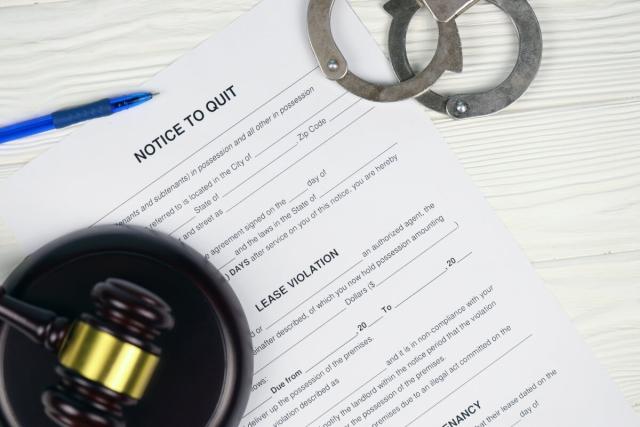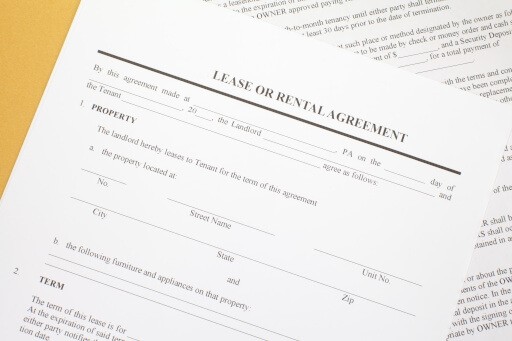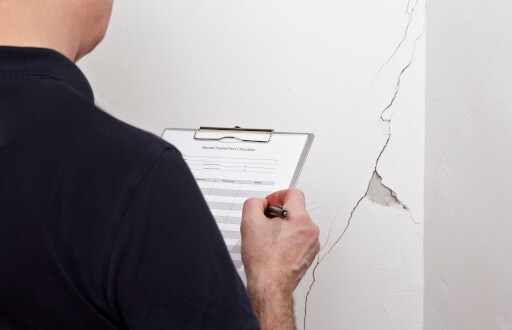
Download our free Lease Violation Letter Template
A lease is a document that outlines the rules, regulations, and guidelines your tenant must follow while living on your property. It is a guidebook that helps regulate a tenant’s behavior. Once the tenant and landlord sign, it certifies that they will follow the agreement.
Sometimes, tenants break the rules, whether intentionally or unintentionally. From excessively making noise during quiet hours to forgetting to pay rent on time, tenants can violate their lease agreement. When this happens, landlords must send a lease violation letter. Learn everything you need to know about a lease violation letter, from what it is to how to write one:
- What is a lease violation?
- What is a lease violation letter?
- Lease violation sample letter
- Tips on how to write a lease violation letter
- What consequences could follow a lease violation letter?
- Legal considerations for lease violation notices
What Is a Lease Violation?
A lease violation is any action that breaches a lease contract. Many lease contracts stipulate precisely what a tenant should or should not do throughout their tenancy.
Common examples of lease violations are:
- Non-payment of rent
- Violation of property rules
- Unauthorized occupants/pets
- Property damage
- Noise complaints
- Subletting without permission
Once tenants sign a lease agreement, they are bound to its terms. If they break one of the rules, the tenants effectively violate the lease.
What Is a Lease Violation Letter?
A lease violation letter is a polite yet formal warning letter to a tenant to stop their lease violation. Landlords send this letter to make tenants aware of their behavior. The letter also warns tenants of the consequences that may follow if the violation continues.
What to include in a lease violation notice
Generally, a lease violation letter includes:
- The address of the rental unit
- The name of the tenant(s)
- The date
- The lease violation
- The time and date the violation occurred (if applicable)
- The deadline to correct the behavior
- The consequences that may follow if the tenant’s behavior continues
Generally, lease violation letters are two paragraphs long. The first paragraph informs tenants of the problem. It should include the tenant's name, the violation, the date of the breach, and the deadline to correct the infraction. Landlords should also reference the specific section of the lease that mentions the violation.
The second paragraph should outline the repercussions if the violation continues. Repercussions can range from late fees to eviction proceedings, depending on the behavior.
How to send a lease violation letter
Landlords should always send lease violation letters to tenants via certified mail. This way, landlords can verify that their tenant received the letter. Then, following the receipt of the letter, tenants can recognize and correct the infringement before actual consequences follow.
Lease Violation Sample Letter
Use these lease violation letter templates as guides for composing a courteous, formal, and succinct warning letter. Additionally, downloadable lease violation forms are provided for your convenience.
General lease violation letter template
Landlords often use this template in cases unrelated to unpaid rent. These violations can include unauthorized tenants or pets, noise or smoke policy violations, etc. To ensure the tenant corrects the behavior, landlords may arrange a property inspection to check the premises for evidence after the deadline.
A lease violation letter looks something like the following:
[Property Address, Unit Number]
[City, State, Zip]
[Today's Date]
Dear [Renter's First Name],
This letter is to inform you that you are in direct violation of your lease agreement for the following reason(s):
- [Lease Violation]
Please cease this behavior immediately. If this violation is not corrected by [Deadline Date], your lease agreement will be subject to termination.
Should you have any further questions regarding the contents of this letter, please do not hesitate to reach out.
Sincerely,
[Your Signature]
[Your Full Name]
[Your Phone Number or Email]
Unpaid rent lease violation notice template
In unpaid rent cases, most landlords include a late fee notice in the lease violation letter. A late fee is a monetary fee charged to a tenant when they fail to pay rent on time. While most landlords extend a grace period to allow tenants time to pay their rent without consequence, grace periods are optional. Therefore, a lease violation letter can either warn that the grace period is beginning or a notice to pay the late fee immediately. For the latter, each letter should instruct tenants to pay the rent amount due and the late fee amount to rectify the lease violation.
To remind their tenants of unpaid rent, use this lease violation notice template:
[Property Address, Unit Number]
[City, State, Zip]
[Today's Date]
Dear [Renter's First Name],
This letter serves to inform you, [Renter's First Name], that we have not yet received your rent payment for the month of [Current Month]. According to your lease agreement section [Insert Section], your monthly rent payment of [Rent Amount] is due on [Rent Due Date] of each month.
Your rent amount of [Rent Amount Due] plus a late fee amount of [Late Fee Amount] is due immediately. Please pay the amount due and the late fee by [Deadline Date].
Failure to pay rent by [Deadline Date] may result in [Consequence, e.g., eviction]. If you have already made a payment, please disregard this letter.
Sincerely,
[Your Signature]
[Your Full Name]
[Your Phone Number or Email]
Tips on How to Write a Lease Violation Letter
There are a couple of tips to keep in mind when writing a lease violation notice:
- Include all of the necessary details and information.
- Remember to use polite yet firm language when drafting your lease violation letter. Sometimes tenants mistakenly violate their lease. Using respectful, non-accusatory language can encourage tenants to correct their behavior while fostering a great landlord-tenant relationship.
- Keep a copy and make sure to date your letter. This shows that you have followed all laws, required notice periods, and the lease agreement in case of any issues.
- State consequences and a timeline so your tenant knows what will happen and when.
What Consequence Could Follow a Lease Violation Letter?
Regardless of the type of lease violation, landlords may terminate the lease early if a tenant fails to rectify the behavior. The main consequence that follows a lease violation letter is eviction. Eviction is the forced removal of a tenant from a rental property. To successfully evict a tenant, landlords must prove they attempted to alert the tenant of the violation before acting.
Thus, a lease violation letter serves two purposes. The letter helps prevent eviction by warning the tenant of the breach. However, it also serves as proof that you attempted to warn the tenant before moving forward with eviction. Always retain a copy of each lease violation letter you send to ensure you keep the correct documentation.
Depending on your local laws, a lease violation letter may be sufficient to serve as the required notice of a lease violation. However, in some jurisdictions, a formal lease violation notice (or notice to quite/cure) may be required as a separate step in the eviction process. The distinction between a letter and a notice often depends on the legal terminology and the requirements in your area, so be sure to check your state laws or speak with your real estate attorney.
Legal Considerations for a Lease Violation Notice
Know your state laws and regulations when sending lease violation letters and notices. Some states have certain notice periods that are required, as well as other stipulations. While seven days’ written notice is standard, be sure to check.
Mitigate Lease Violations by Screening Tenants with Apartments.com
The best way to tackle lease violation letters is to eradicate their need. So, how do you avoid breaches of your lease contract? You can avoid these sticky scenarios by finding good tenants.
One of the most important steps to finding a good tenant is conducting screening. You can screen your tenants with Apartments.com. On our easy-to-navigate platform, you can review your potential renter’s criminal, credit, and rental history with the click of a button.
If you need more information, easily request references from your potential tenant’s previous landlord. The best way to avoid a lease violation is to select a tenant who will respect your lease terms; you can find that tenant easily with Apartments.com.
This article is intended for informational purposes only and does not constitute legal advice. For personalized guidance on legal matters, it is strongly recommended to consult a qualified attorney or professional. Always seek expert advice to ensure your actions are accurate, appropriate, and tailored to your specific situation.
FAQ
How do I get a tenant to move out?
The methods of dealing with a tenant that won’t move out vary depending on your situation. You can try to get them to vacate willingly by offering cash for keys. If they still won’t move out or are past the end of their lease, you must go about the eviction process.
Can tenants dispute a lease violation notice?
Tenants can dispute a lease violation notice if they feel it is unwarranted or the proper process has not been followed. This is why keeping proof of violations and documents is vital to protect yourself.
This article was originally published on July 18, 2022.











